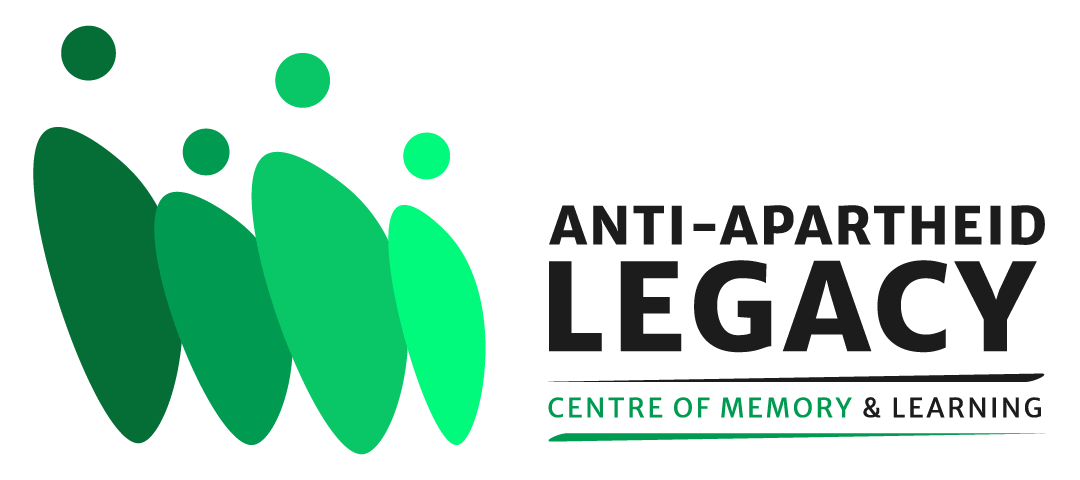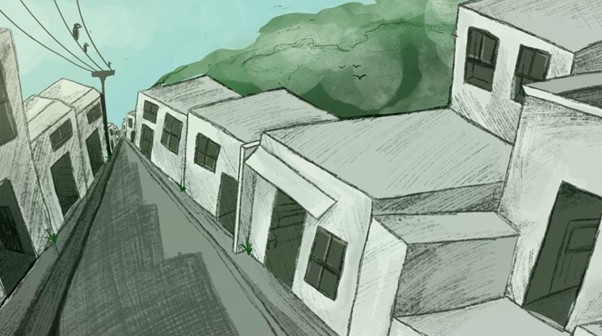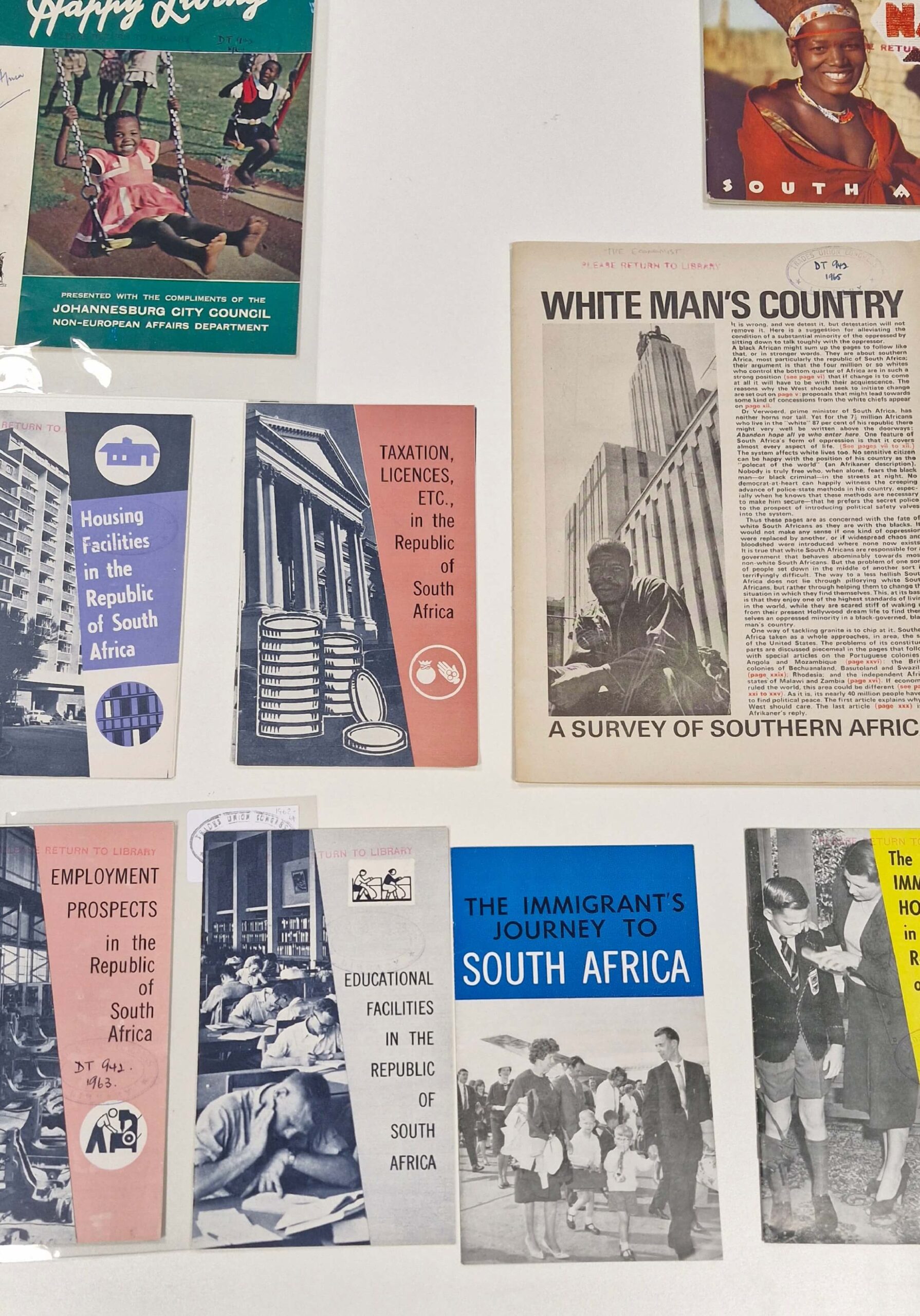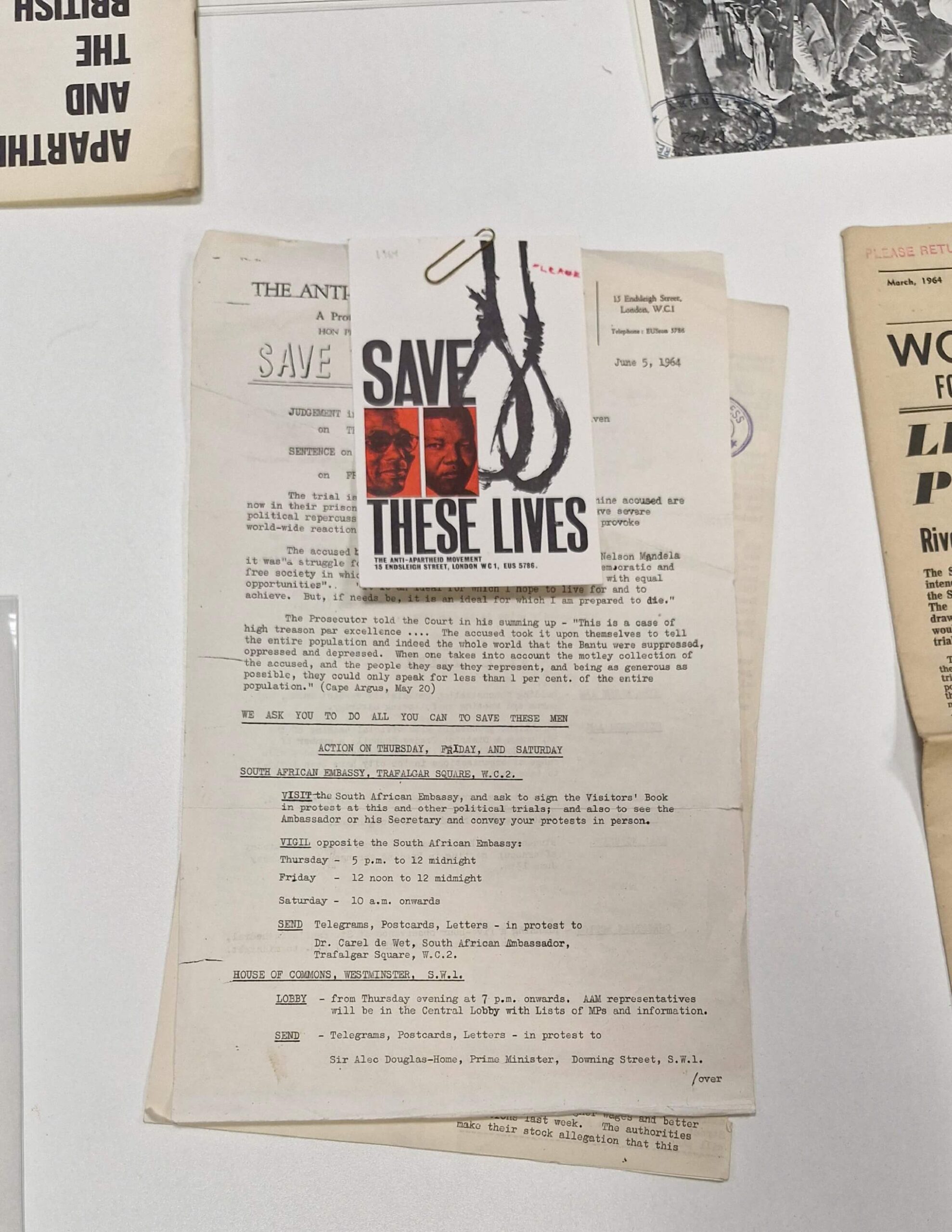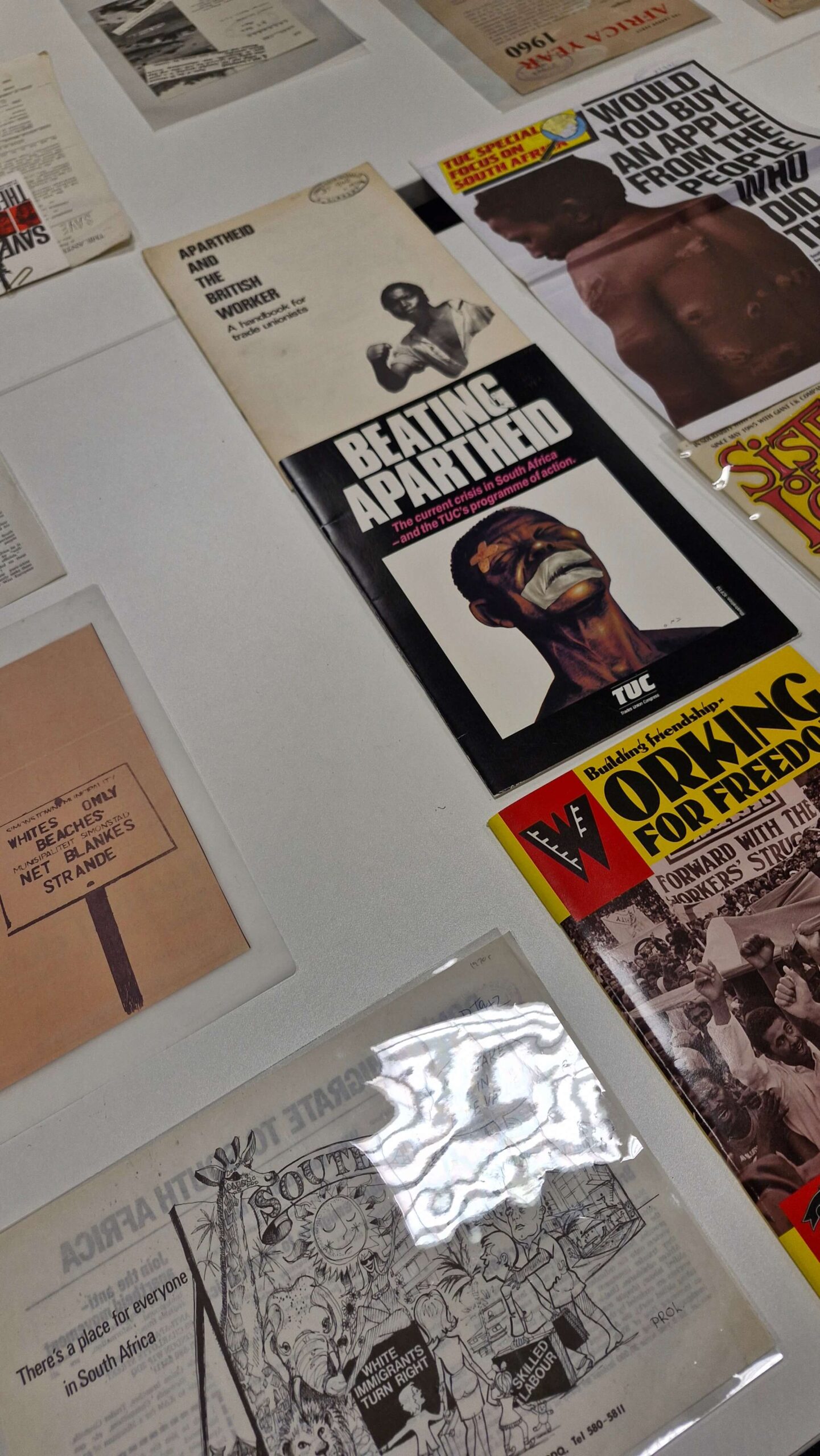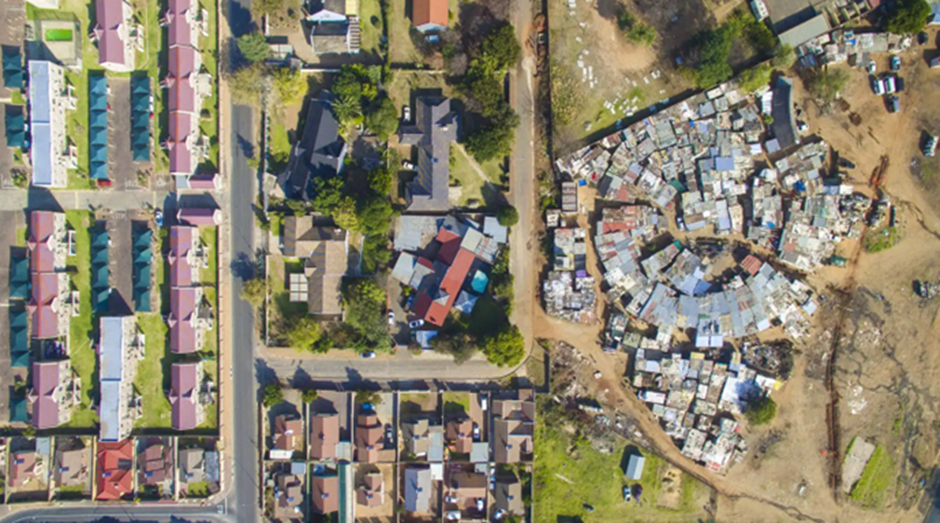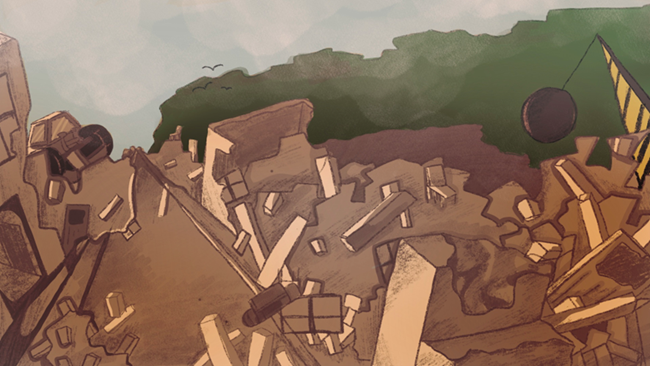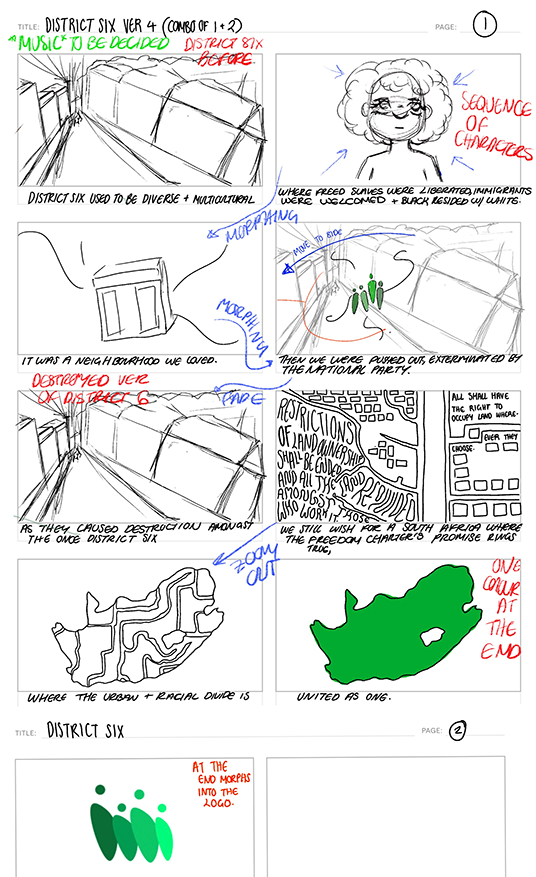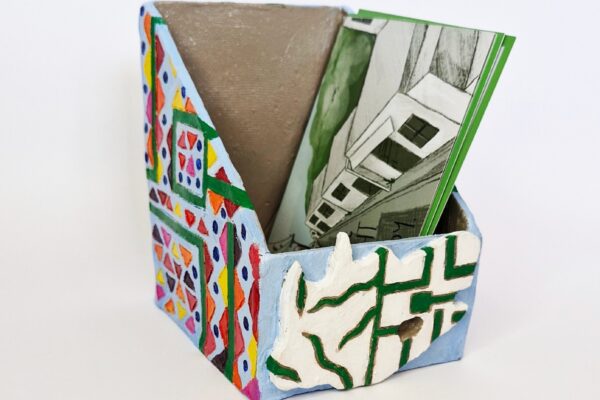I am currently in my Second Year studying Illustration and Animation at London Metropolitan University (The School of Art, Architecture and Design). As part of my course, I responded to a brief set by the Anti-Apartheid Legacy Centre to both celebrate The Freedom Charter’s 70th Anniversary and to help contemporary audiences engage with its legacy and values.
The Freedom Charter (1955) was established as a symbol of hope and aspiration for what those against the anti-apartheid regime wanted the future of South Africa to look like. Within the client brief, we either had to complete a 30-40 second animation or a comic with a poster. Each student in the cohort was given an individual tenet that was part of the Freedom Charter. I received ‘The Land Shall Be Divided Amongst Those Who Work It!’ The work had to be appropriate for those aged 11+ and therefore, easily understandable and educational. This was the starting point to the project.
To commence the work, I started by completing in-depth research. Talking about a historical topic means that there needs to be thorough investigation to ensure a factual outlook as well as correctly representing the group you are speaking of. I am not Black or South African and therefore, approaching the topic as sensitively and with respect was of the utmost importance for me. I started by gathering the knowledge I was already aware of and then used this to expand research; using textbooks, archives and current news surrounding South Africa was also important.
We were introduced to the University’s Special Collections Archive, where we were able to access original and rare items from Apartheid South Africa including propaganda material and Anti-Apartheid activism related items. This inspired me to focus on one area of land where Black people and others were pushed out into townships.
London Metropolitan University Special Collections TUC Archive images.
Looking into the issue of urban divide further, I was drawn to the research by Jonny Miller in his Unequal Scenes project, which highlights inequalities across the world through photography. Miller has shared a series of drone images of South Africa in the present. These display the wealth divide in housing types close to each other. The larger houses with vast green land are often residents to a white rich population whereas metres away (usually separated by a road or bushes, are informal settlement homes which are often resided by Black or those of mixed-heritage. These images were something I knew I wanted to speak on and include for inspiration when looking at the tenet.
Kya Sands/Bloubosrand from Unequal Scenes: Segregation of urban spaces in South Africa by Johnny Miller Photograph: Johnny Miller/Millefoto/Rex/Shutterstock, produced in The Guardian 23.06.2016
I further explored the potential of District Six as a focal point for my project and found stories of those who were pushed out of District Six and then eventually, after the end of the Apartheid regime, went back to live in District Six.
However, it was very much clear to me from my research that the issues of Apartheid and the discrimination people faced was still very deep rooted into the landscape of South Africa. The land, urban, racial and financial divide was still prevalent, with people travelling hours to get to work from leftover townships with white people and the rich often living in the city centre or in wealthier areas. This is something I knew I wanted to address within my work.
Concept art based on destruction of District 6, Abigail Warren
The tenet of the Freedom Charter that “The Land Shall Be Divided Amongst Those Who Work It” remains an unfulfilled ideal in South Africa. Despite the end of apartheid, deep inequality persists – land ownership is still highly skewed, and the legacy of forced removals continues to shape both the psychological well-being of communities and the physical landscape, where stark contrasts in housing and access to land remain visible reminders of past injustices.
THE ANIMATION
After establishing my idea, I considered which creative option I would choose. I decided to work on an animation as I feel it is an engaging form of visual communication for audiences. Working with motion, particularly animating characters and designing concept art are all aspects of animation I have also begun to really enjoy. I began to write up different scripts from varying perspectives. I was not sure to begin with if I was going to have the script from the perspective of a person who lived in South Africa and pushed out (a fictional scenario based on true events), or to keep the work strictly factual. I eventually decided on a more narrative based voiceover from the perspective of a person. This allowed for a more emotive story which allows for better understanding as emotion is an inherently human trait. As well as this, perspective from another person may be an easier way for children to understand the seriousness of this issue while ensuring that the topic does not become overly ‘heavy’.
I started by working on a storyboard. This is a form of visual script to ensure that there is an
establishment of how you want the project to look and potential images moving forward. After feedback and multiple revisions. I decided on a storyboard that mostly has ‘morphing’ transitions. Morphing is a term used in the animation industry to demonstrate when one object will turn into another object in an abstract way, rather than something literal, such as a character moving a limb or their mouth. These concepts were determined within my storyboard and the script I had written. After this, I began to develop some visual elements such as a background and character design drafts. After feedback, I then developed my animatic. An animatic is a rough draft of animation that has no colour and placeholder audio in order for the creator to determine timing and pacing of the audio in relation to the visuals on the screen. After the clients’ feedback, I then commenced work on the rest of the concept art and developing audio.
In terms of the audio, I felt it was important that the person voicing the script was a Black South African to embed authenticity. This was also a mechanism to offer a platform for those whose ancestors would have experienced the hardship of Apartheid, and whose people will suffer the effects of forced removals was offered an opportunity to speak on the issue of land divide and was compensated for their time. From here, I began to animate, receiving feedback from the Anti-Apartheid Legacy team and from my tutors to help me improve the work.
Overall, I am very happy with the outcome of the animation. I was able to include all of the technical aspects that I wished to and I hope that through the animation that viewers are able to gain a deeper insight into the effect of forced removals – then and now – and that the animation articulates the severity of their long-lasting impacts.
Postcard, Point-of-Sale and Poster
To further develop work for this project, I also created a poster which included the text of the Freedom Charter tenet as well as a postcard, both to bring a wider audience to the work through visual prompting. I also created a point-of-sale display mechanism to hold the postcard. For these aspects I wanted to focus on matching the visual language as well as ensuring that they communicate well on their own.
My point-of-sale display contains lots of patterns, reflective of the urban divide in South Africa, the side with the straight lines and aligned triangles reflects the richer and white neighbourhoods, the random placement of lines and the abstract nature of the triangle placement represents the townships and their appearance. The contrast reflects the drone images I spoke of earlier in this blog post. My postcard contains a QR code link to my animation as well as text giving context to the Freedom Charter and an image which is relevant to my animation.
Point-of-sale and Postcards and initial sketches – Abigail Warren
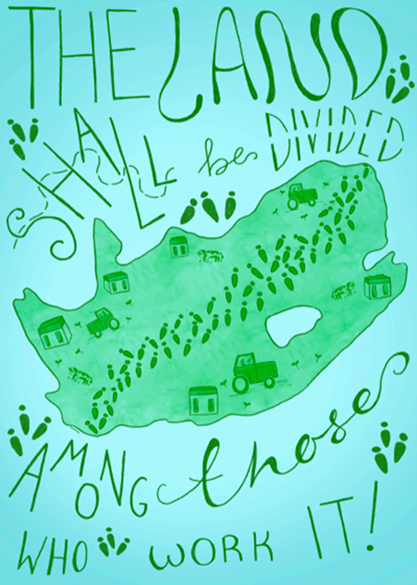
Poster – The Land Shall be Divided Among Those Who Work It! – Abigail Warren
The work I have created for the Anti-Apartheid Legacy Centre is something that I am very proud of and I hope that people are able to learn about, and reflect on, the continued issues that remain due to the impact of the Apartheid regime on South Africa and its people. You can view my other work on @abxgaxlart (Instagram) where I produce other examples of animation and illustration associated with character design and other impactful social issues.
ANIMATION :
Written by Abigail Warren, June 2025.
